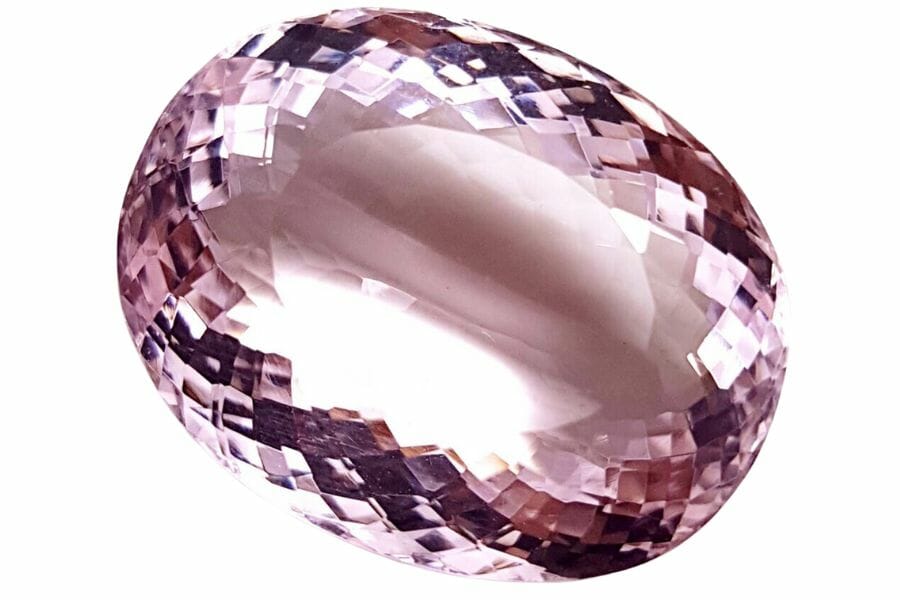We’re going to delve into a detailed comparison between two striking gems: morganite and moissanite. These are two incredibly beautiful stones that are often confused with each other.
While they both shine and sparkle, these gemstones offer unique qualities that distinguish one from the other. In this article, you’ll learn how to compare morganite vs moissanite in terms of appearance, hardness, price, and more.
Morganite is a gem with a beautiful pinkish hue. It’s got a cool story too, forming deep in the earth over millions of years.
On the other hand, moissanite is all about that sparkle. It’s super hard, super shiny, and here’s the kicker: most of it comes from labs!
Choosing the perfect gemstone for your jewelry or for your collection can sometimes feel like a treasure hunt. Whether you’re looking for jewelry or interested in learning more about geology, we’ve got something for you.
Morganite vs Moissanite – The Major Differences
Morganite has a soft pink blush, and moissanite is known for its fiery brilliance. While they both can make for striking pieces of jewelry or fascinating specimens for gem enthusiasts, they are very different from each other in a variety of ways.
Colors – Morganite has a peach-pink color
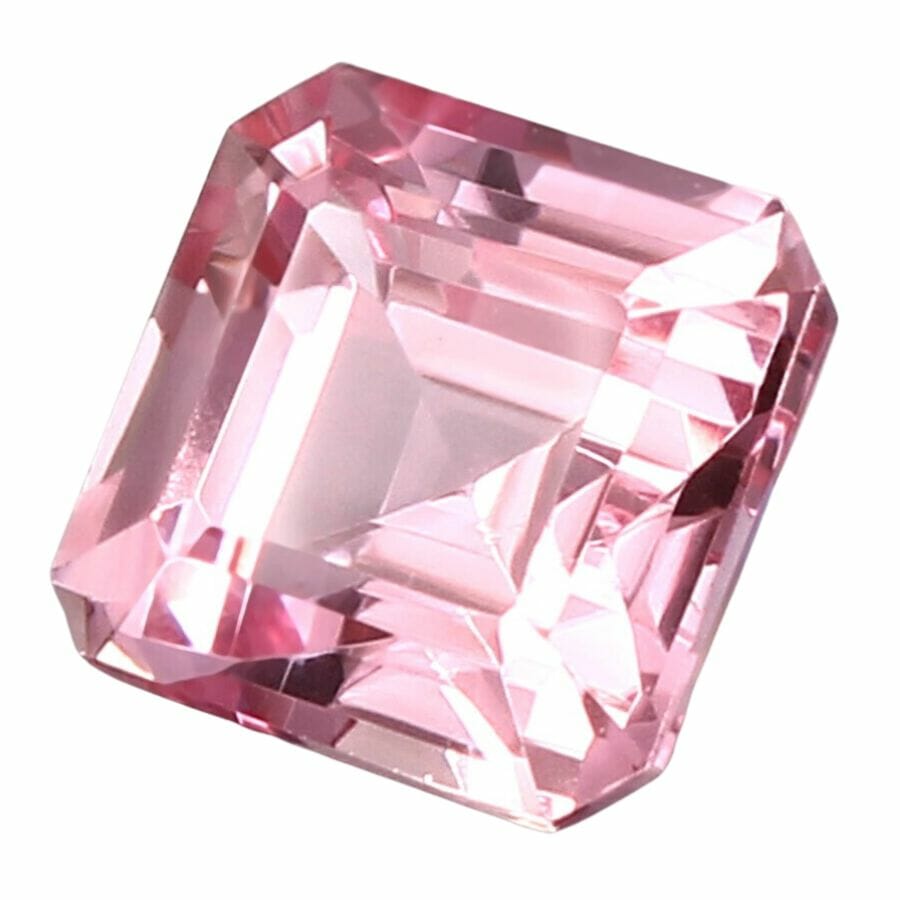
One of the easiest ways to tell morganite and moissanite apart is by their color. Morganite is famous for its gentle pink to peach hues. The blush of color can range from a soft pink, almost like a baby’s blush, to a warm peach tone.
It’s this soft touch of color that gives morganite a unique charm. Whether set in a ring or a necklace, morganite adds a splash of pastel color.
Moissanite, on the other hand, is a different story. Usually, moissanite is colorless, looking a lot like a diamond to the untrained eye. But sometimes, moissanite can show slight yellow or green tints, especially under certain types of lighting.
Still, these tints are usually very subtle. Most of the time, moissanite looks clear and sparkly, making it a great choice for those who want the look of a diamond without the high price.
Luster – Moissanite shines like a diamond
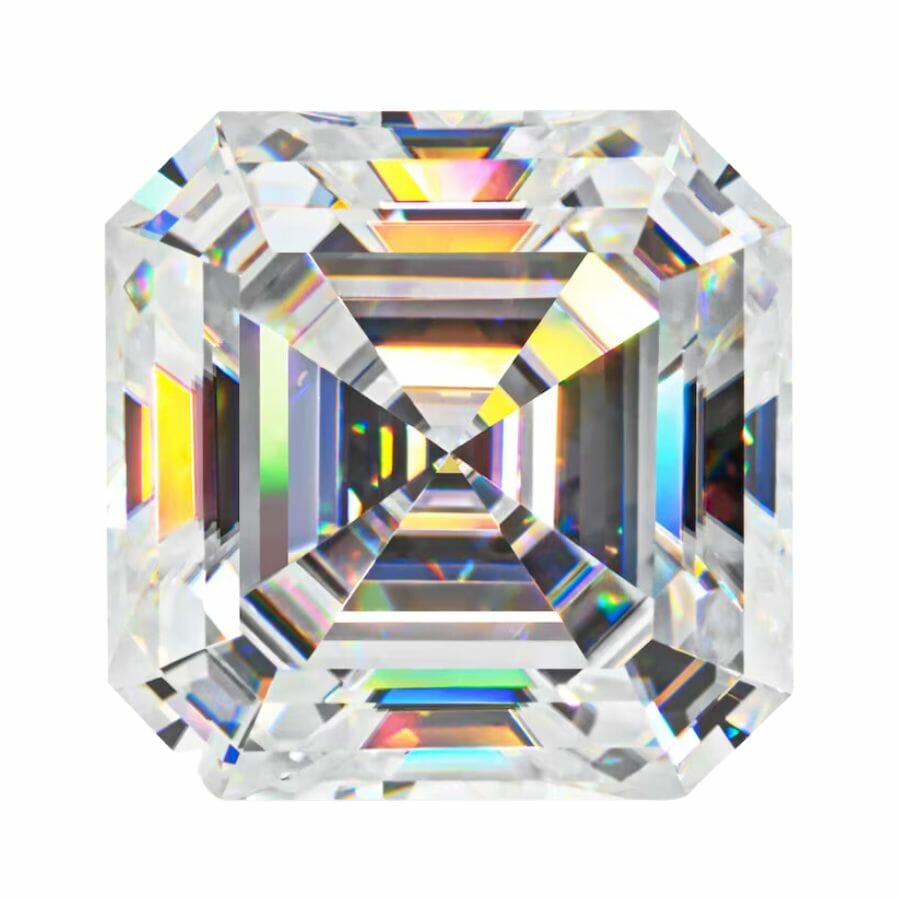
One fascinating way to differentiate between morganite and moissanite is by looking at their luster, or the way they interact with light.
Morganite has what’s known as a vitreous luster. This means it shines like glass when it’s cut and polished. Think about how light bounces off a clean window or a drinking glass. That’s similar to the luster of morganite.
On the flip side, moissanite has an adamantine to metallic luster. Adamantine luster refers to a bright, diamond-like shine. It’s the kind of brilliant sparkle you might see in a diamond.
Meanwhile, the metallic aspect of moissanite’s luster can give it a slightly different shine under certain lighting. This combination makes moissanite exceptionally brilliant and fiery, with more sparkle than most other gems.
If a gemstone has a soft, glass-like shine, it’s probably morganite. If it has an intense, diamond-like sparkle, it’s more likely to be moissanite.
Cleavage – Morganite often breaks in a single plane
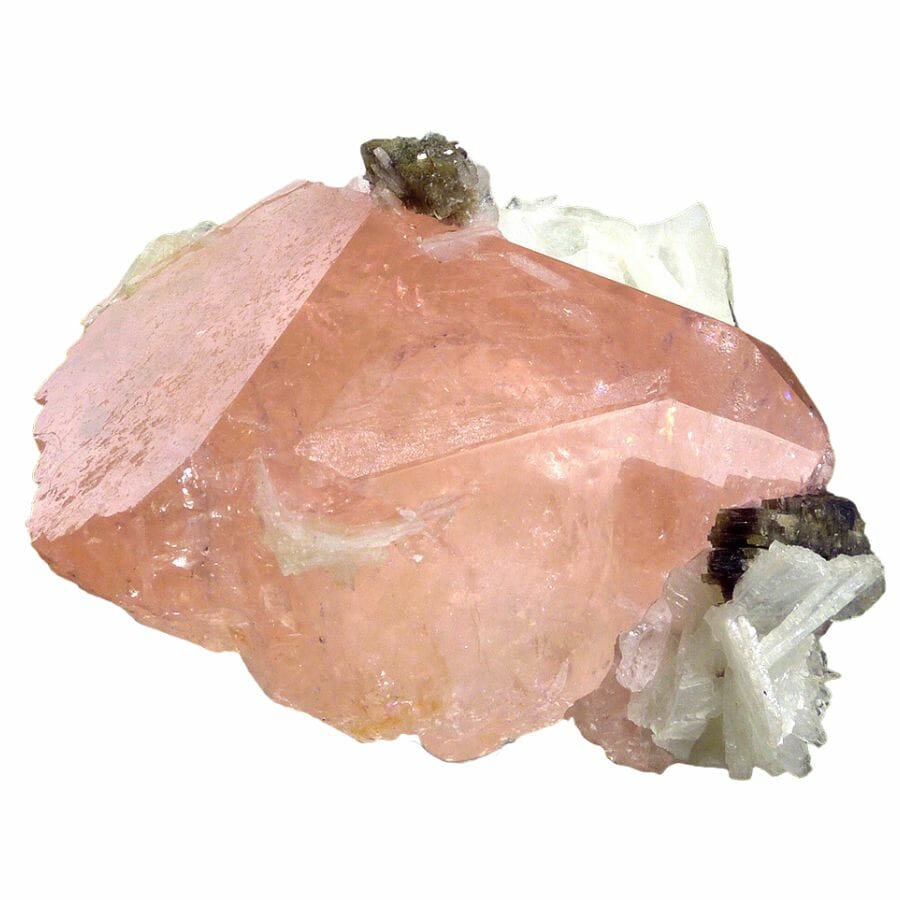
In gemology, cleavage refers to how a crystal breaks when force is applied. This characteristic can affect how a gem is cut and how it might handle being worn.
Morganite has what’s called imperfect basal cleavage. This means that it tends to break in one direction along a plane parallel to the base of the crystal.
This characteristic makes morganite more durable in jewelry, reducing the chances of it chipping or breaking when it’s worn.
Moissanite, on the other hand, has no cleavage at all. It doesn’t have preferred directions of breakage like morganite does.
If you tried to break a moissanite crystal, it would fracture in a pattern called “conchoidal fracture.” This type of fracture looks like the curve of a shell.
This makes moissanite even more durable in jewelry than morganite, because it’s less likely to chip or crack.
Hardness – Moissanite is one of the hardest substances on Earth
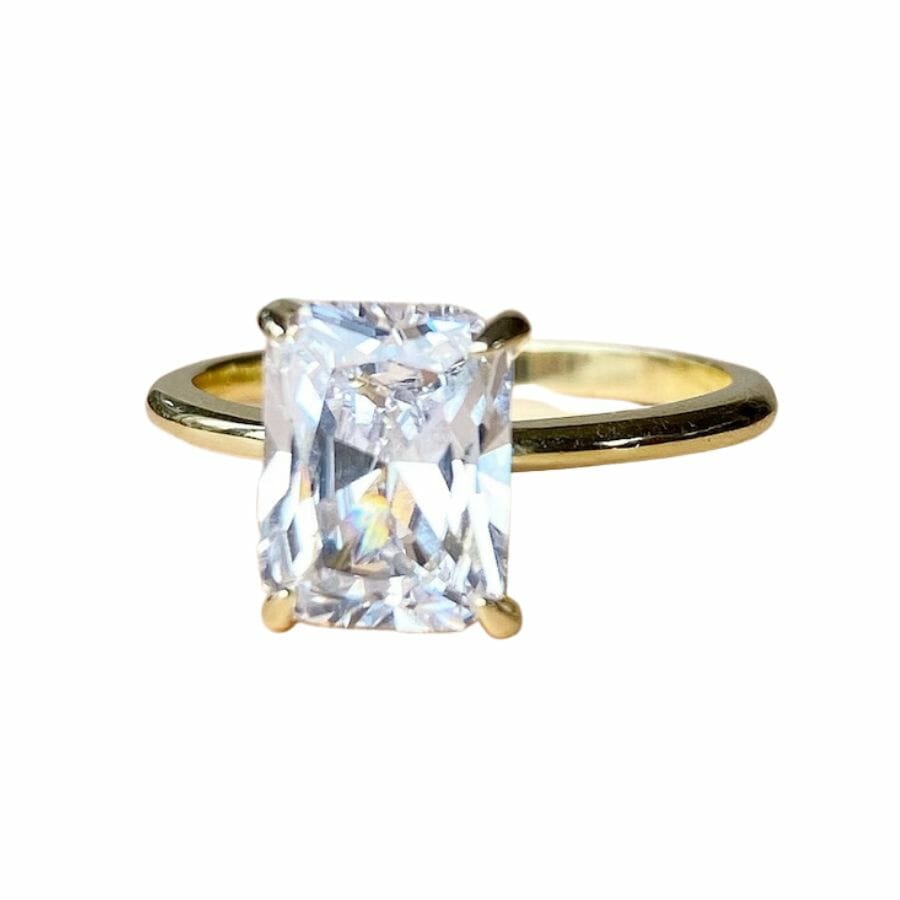
The Mohs hardness scale helps measure how hard minerals are. It goes from 1 to 10, with 1 being super soft and 10 being super hard. This scale helps us compare the hardness of different minerals and gemstones.
Hardness matters a lot when it comes to gemstones. It determines how well a gemstone resists scratches and wear. This is especially important for pieces like rings or bracelets that can get bumped or scraped.
Morganite is pretty tough. It scores 7.5 to 8 on the Mohs scale of mineral hardness. This means that not many everyday objects will be able to scratch it.
However, moissanite is even tougher, with an impressive score of 9.25 on the Mohs scale. This makes it one of the hardest substances on Earth, second only to diamonds, which score a 10.
This means moissanite is incredibly resistant to scratching and wear. It’s a great choice for all types of jewelry, especially those pieces you plan to wear daily. If you’re looking for a gem that’s super scratch-resistant, moissanite has the edge.
Streak – Morganite has a white streak
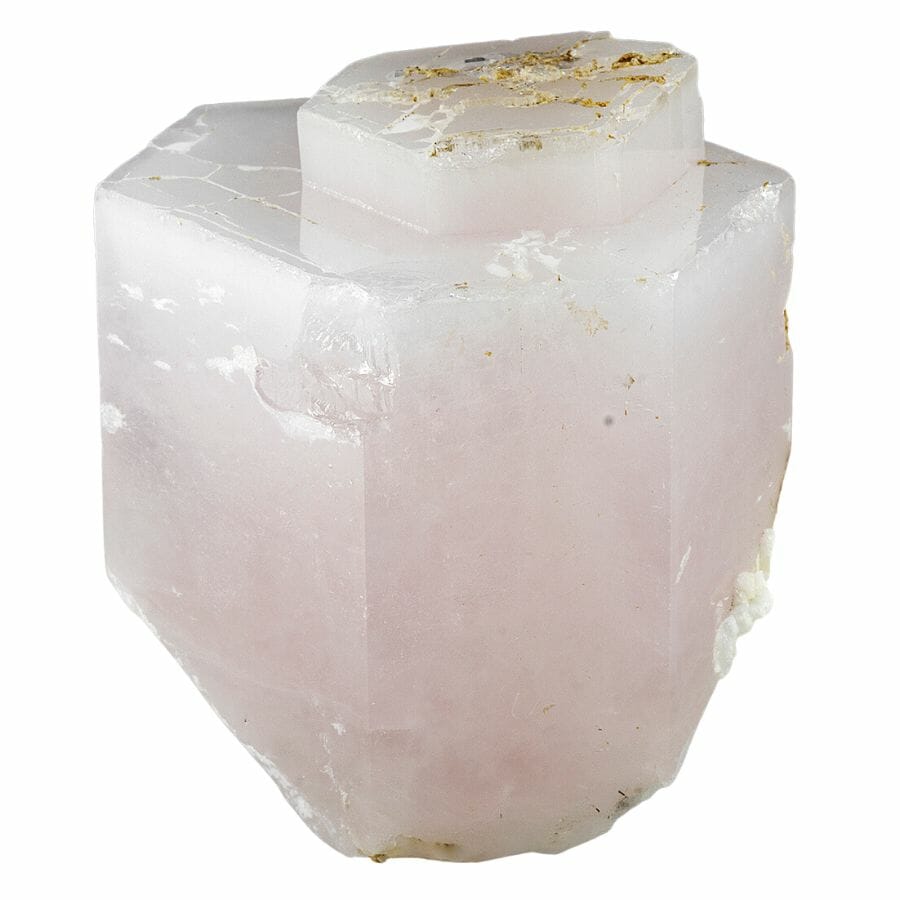
The streak of a mineral is the color of the powder it leaves behind when it’s rubbed against a streak plate. This test is often used in gemology, the science of studying gems. The color of the streak can provide a clue to the mineral’s identity.
One unique way to contrast moissanite vs morganite is by looking at their streak. The powder morganite leaves behind would be white. This is typical for minerals in the beryl family, which morganite is a part of.
On the other hand, if you were to take a moissanite gem and do the same test, you would find that it leaves a greenish-gray powder.
Remember, performing a streak test can scratch the gemstone, so it’s not recommended to do this with a piece of jewelry you care about.
However, both morganite and moissanite are harder than a streak plate, so you’ll need to use a different tool to conduct a streak test.
Crystal structure – Moissanite has a more complex crystal structure
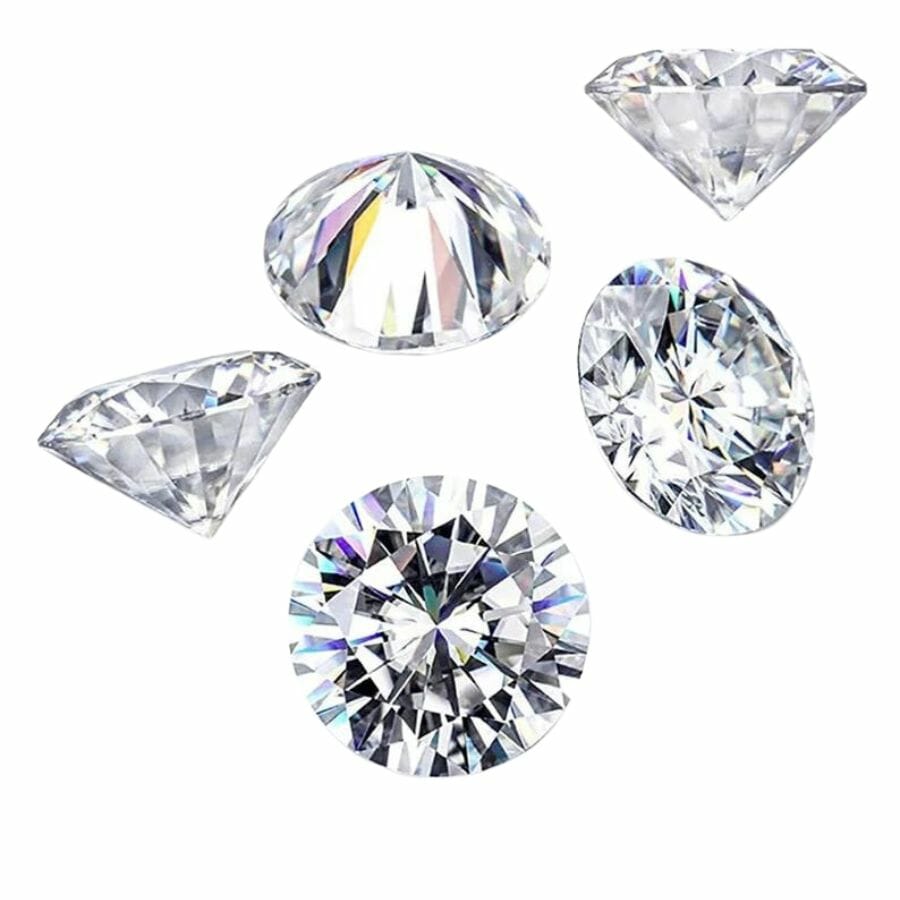
A gemstone’s crystal structure, or the way its atoms are arranged, can affect how the gem forms, how it looks, and even how it shines.
Morganite has a hexagonal crystal system. Picture a hexagon, which is a shape with six equal sides. Now, imagine this shape extending into three dimensions to form a crystal.
That’s roughly what the crystal structure of morganite looks like. Thus, morganite is often found in what are called short, prismatic crystals. These can look like little columns or rods with hexagonal cross-sections.
Moissanite also has a hexagonal crystal system, but with a bit of a twist. Its crystal structure is classified as hexagonal – dihexagonal pyramidal.
This means that the moissanite crystals have more complex forms that include pyramid-like shapes in addition to the basic hexagonal structure.
This contributes to moissanite’s dazzling brilliance and fire when it’s cut and faceted for jewelry.
Even though both gems have a hexagonal crystal system, the slight differences in their crystal structures contribute to their distinct appearances and properties.
Chemical composition – Morganite is made up of several elements
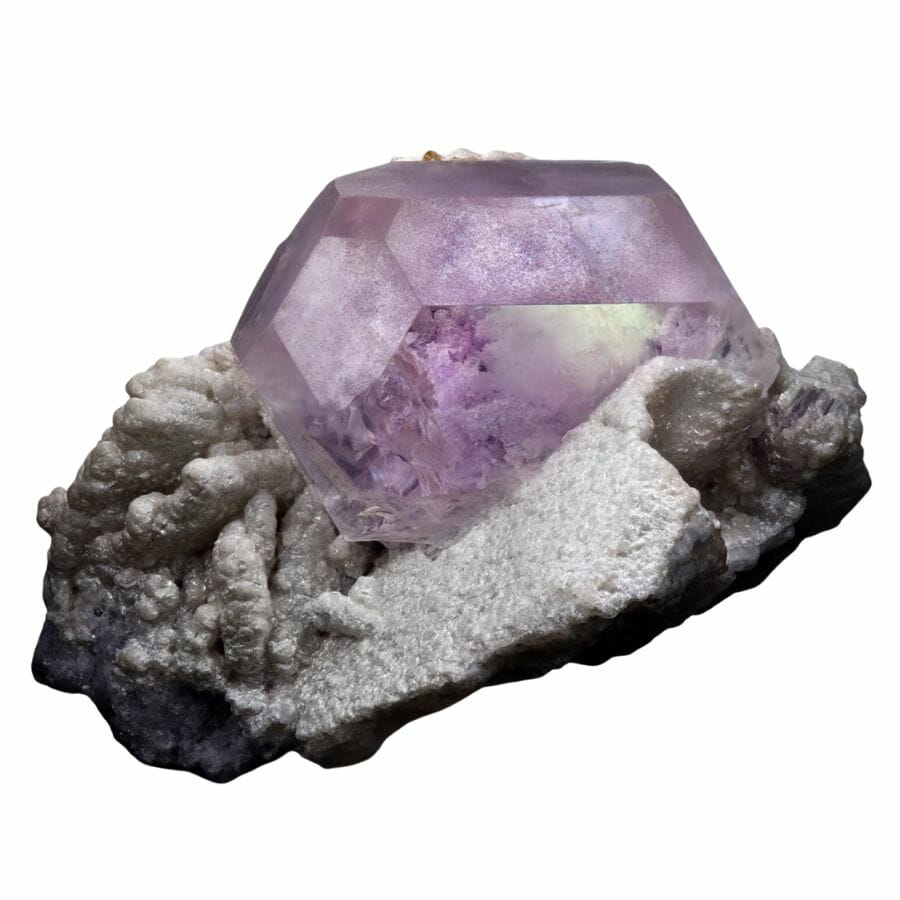
One exciting aspect of gemstones is their chemical composition. That’s what they’re made of. Even though gemstones like morganite and moissanite may seem similar to the naked eye, they’re made of entirely different stuff.
Let’s start with morganite. Morganite contains the elements beryllium, aluminum, silicon, and oxygen. It’s a variant of the mineral beryl, which is colorless in its purest form.
But what gives morganite its signature pink color? That would be manganese. Manganese atoms slip into the crystal structure and give morganite its lovely shades of pink and peach.
Now, let’s talk about moissanite. Moissanite is made of silicon carbide. That means it contains silicon and carbon atoms.
Unlike morganite, moissanite is rarely found in nature – at least not on Earth. Most moissanite gemstones are created in labs, where scientists can control the conditions to make these beautiful, super-sparkly gems.
Formation – Moissanite naturally forms in meteorites
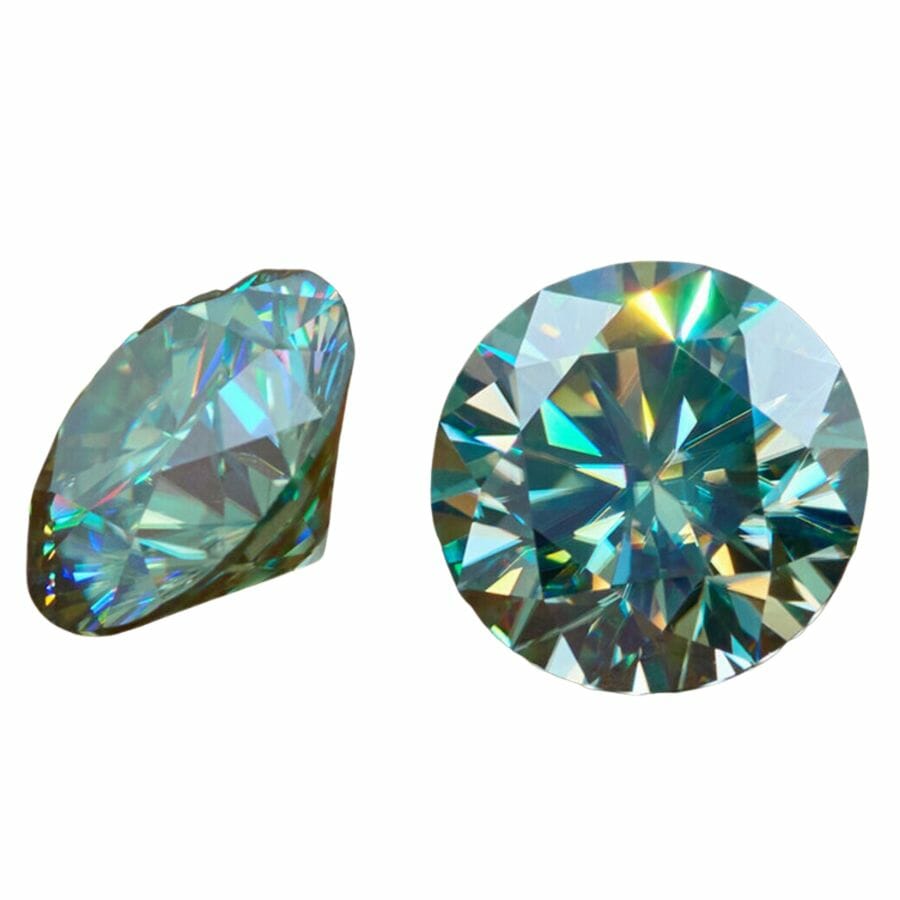
Each type of gemstone has a unique story that’s tied to the geological conditions of its origin. This is a huge difference between morganite and moissanite.
Morganite forms in special rocks called pegmatites. Pegmatites are a type of igneous rock, which means they form from cooling magma or lava.
Imagine magma deep within the Earth slowly cooling over thousands of years. As it cools, different minerals start to crystallize, including morganite.
Sometimes, morganite can also be found in alluvial deposits. These are areas like riverbeds where the gemstone has been carried by water from its original location.
If you’re interested in discovering gems and fossils firsthand, researching where to go rockhounding is a great starting point for planning your next adventure.
Moissanite, on the other hand, has an out-of-this-world origin. It’s naturally found in meteorites – yes, rocks from space! But natural moissanite is extremely rare on planet Earth.
So, nearly all the moissanite you see in jewelry didn’t form naturally. Instead, it was created by humans in a lab. Scientists use high heat and pressure to transform silicon and carbon into beautiful moissanite gems.
Density – Morganite is less dense
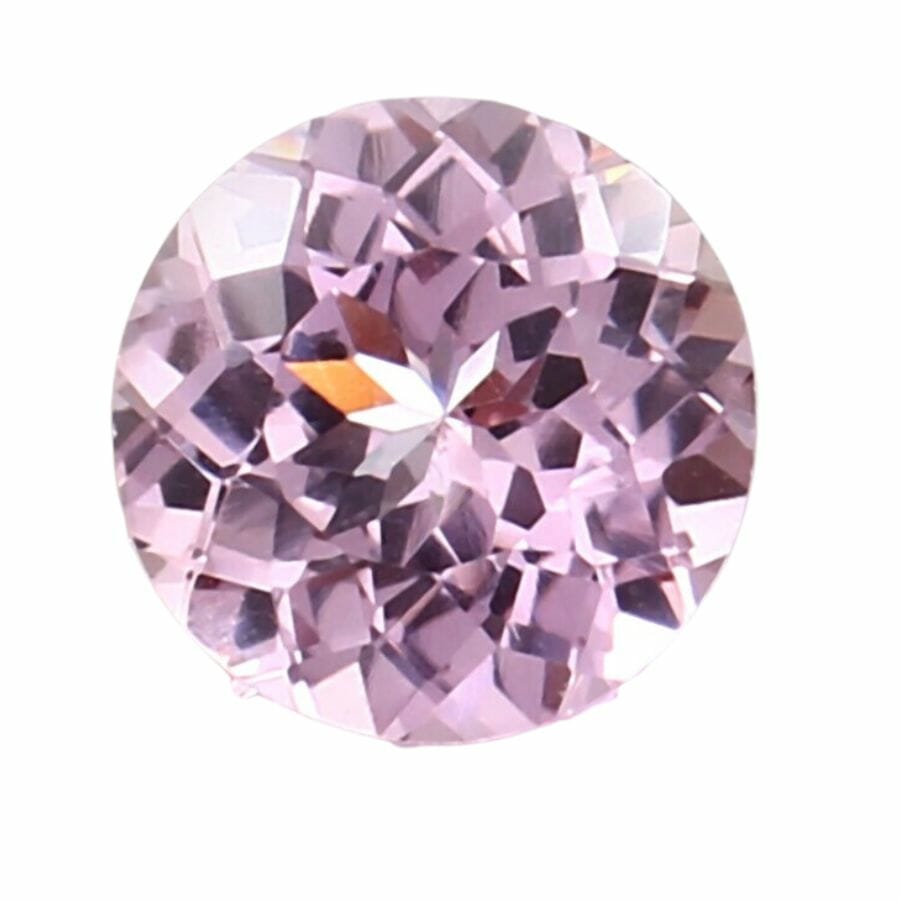
Density refers to how much matter is packed into a certain space. In the case of gemstones, density is usually measured in grams per cubic centimeter.
Morganite, for instance, has a density of around 2.71 to 2.9 grams per cubic centimeter.
This might not sound like a lot, but remember, density isn’t about how much something weighs. Instead, it’s about how tightly packed the atoms are in the gemstone.
So even though morganite feels light in your hand, its atoms are still pretty snug with each other.
Now let’s consider moissanite. It has a higher density at around 3.22 grams per cubic centimeter. If you take a piece of morganite and a piece of moissanite of the same size, the moissanite will feel heavier.
These differences in density might not change how you feel about these gems, but they can help you identify them.
Conductivity – Moissanite is a good conductor
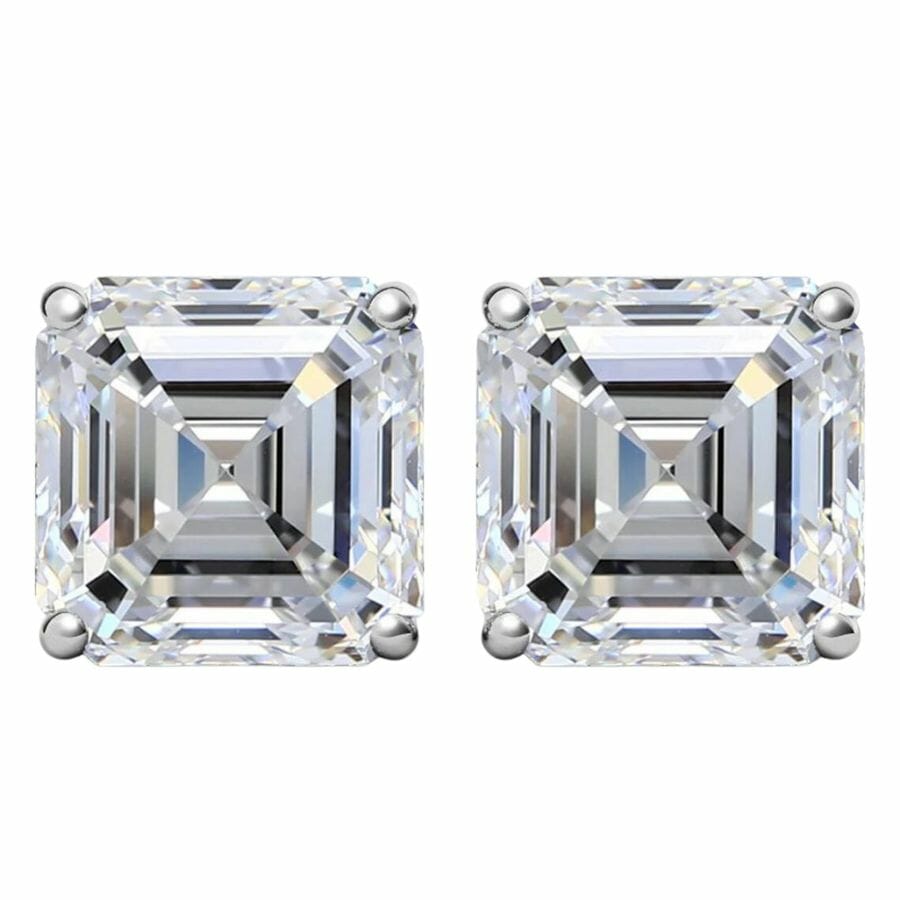
Conductivity is about how well a material can transfer energy. If a material is a good conductor, it allows electricity or heat to pass through it easily. Some materials, like metals, are great conductors, while others, like rubber or wood, are not.
If you want morganite to conduct electricity, you’re out of luck. It has little to no conductivity, so it won’t allow electricity or heat to pass through it.
However, moissanite is a different story. This gemstone is a conductor, which means that it allows electric currents to flow through it.
Electrical conductivity is just one property of gemstones. It’s not something that affects their beauty or their value as jewelry. But it’s an interesting factor that can help people identify different types of gems.
Price – Morganite is less expensive but still pricey
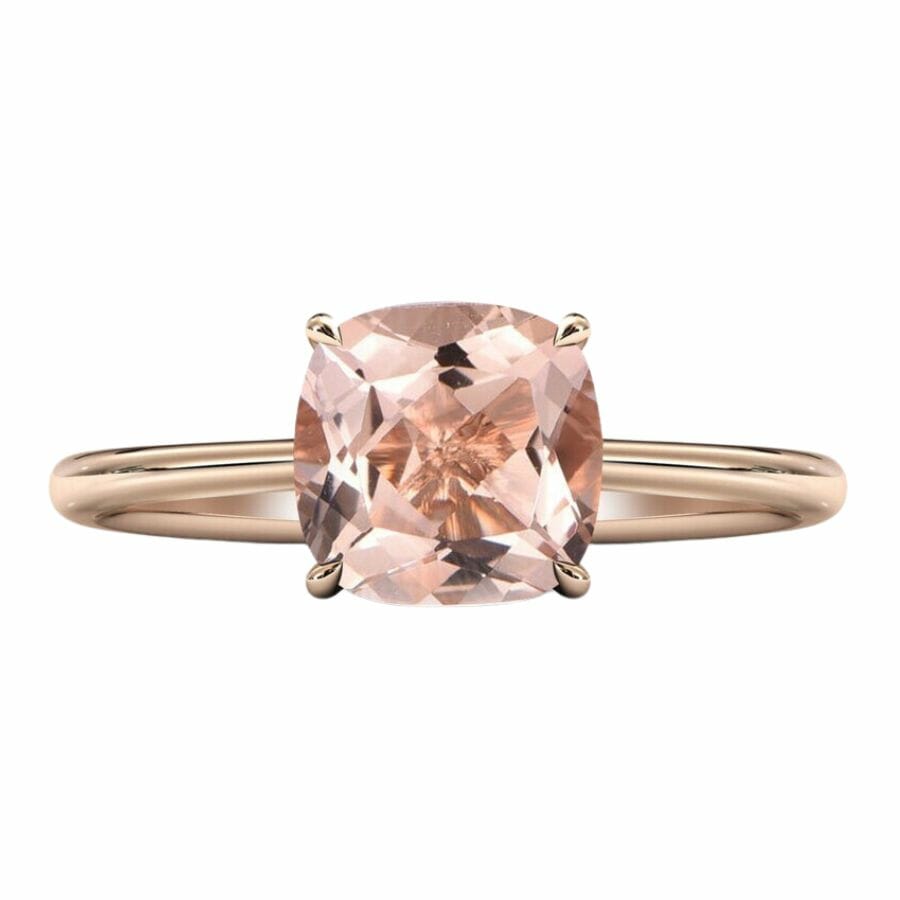
Price is always an important factor to consider when buying gemstones, whether it’s for a piece of jewelry or just to add to your collection. The prices of morganite and moissanite can differ quite a bit depending on several factors.
Morganite can be quite pricey, especially its larger and higher-quality stones. If a morganite stone is big, has a strong pink color, and has few inclusions or flaws, you can expect to pay a premium for it.
The value of morganite increases with the depth of its color – the pinker, the better!
On the other hand, moissanite is generally more expensive than morganite. Moissanite’s selling point is its incredible brilliance and hardness. That’s why it’s considered to be a much less expensive diamond alternative.
However, its price can still add up for larger and perfectly clear stones.
When you’re shopping for gemstones, remember that price is only one factor to consider. It’s also important to think about the gemstone’s durability, whether you like how it looks, and whether it holds any special meaning for you.
Location – Moissanite is often grown in labs
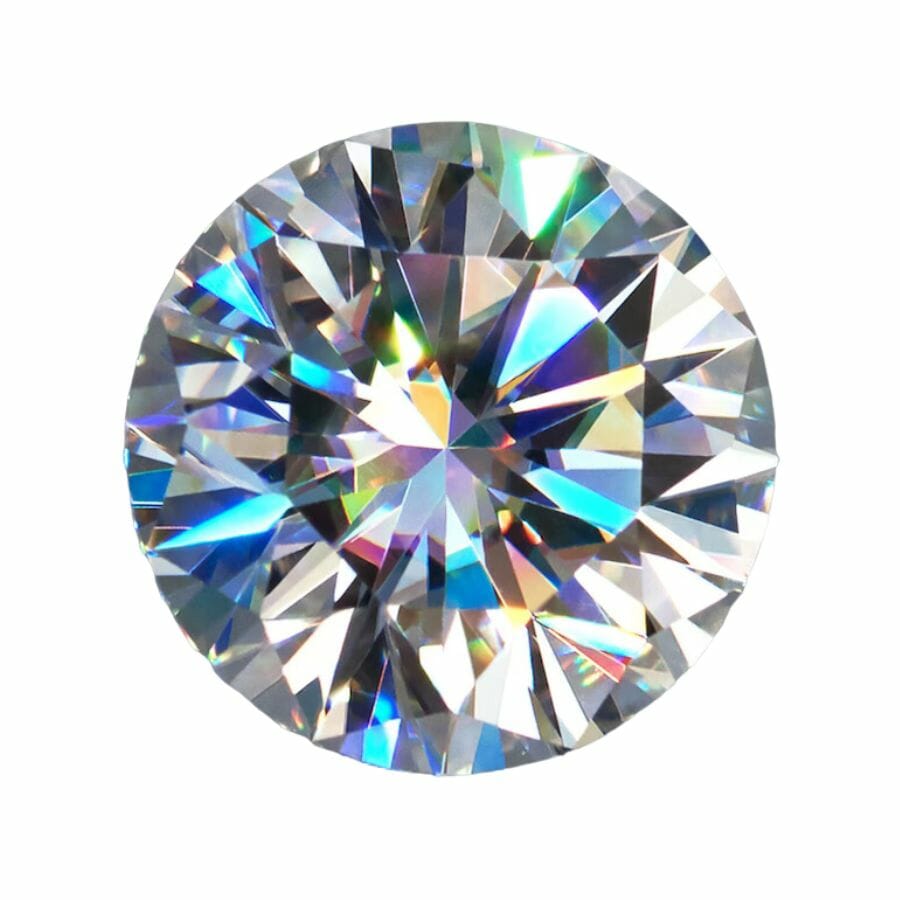
A gemstone’s origin can tell us a lot about its journey from deep in the Earth – or even outer space!
You can find morganite in Afghanistan’s rugged mountains, Brazil’s lush landscapes, Madagascar’s tropical environment, and even in the United States. These are great places to go crystal hunting.
On the flip side, natural moissanite is the elusive traveler. It’s extremely rare and has been found in only a handful of locations, often at meteorite impact sites.
But the moissanite you see in a jewelry store didn’t likely come from a meteorite. Because it’s so rare in nature, almost all the sparkling, gem-quality moissanite we see is created in labs worldwide.
So whether it’s a well-traveled morganite or a lab-grown moissanite, each gemstone has a unique journey before it reaches us.
Moissanite vs Morganite – The Similarities
Both morganite and moissanite have unique qualities and shared traits. Let’s uncover their similarities and understand what makes these gemstones tick.
Fluorescence – Both gemstones glow orange under UV light
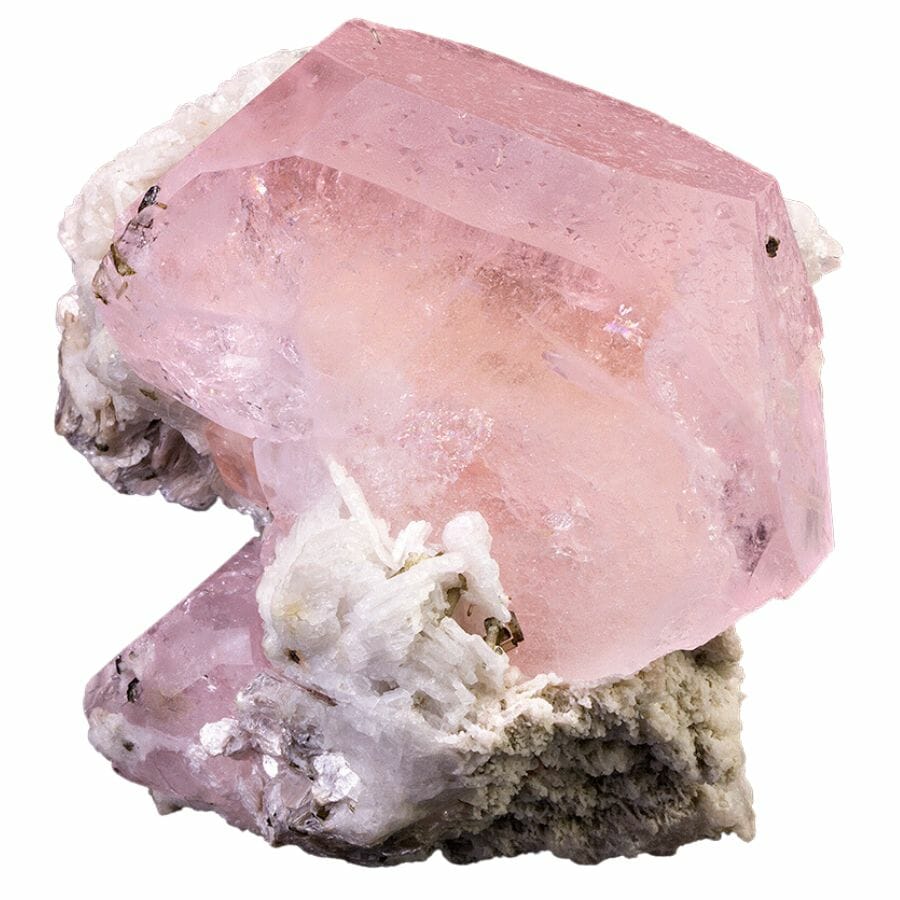
Imagine if some gemstones could glow like a bright neon sign! That’s pretty much what happens when certain gems, like morganite and moissanite, are exposed to ultraviolet light. This cool glow is called fluorescence.
Take morganite, for example. If you’ve ever seen this gem, you know it’s usually a pretty pink color. But under ultraviolet light, morganite can surprise you by glowing an orange-yellow color!
Now, let’s talk about moissanite. In normal light, moissanite is a clear, sparkly gem that looks a lot like a diamond. But guess what? It also glows under UV light, but in an orange-red color.
Clarity – They are both high-clarity
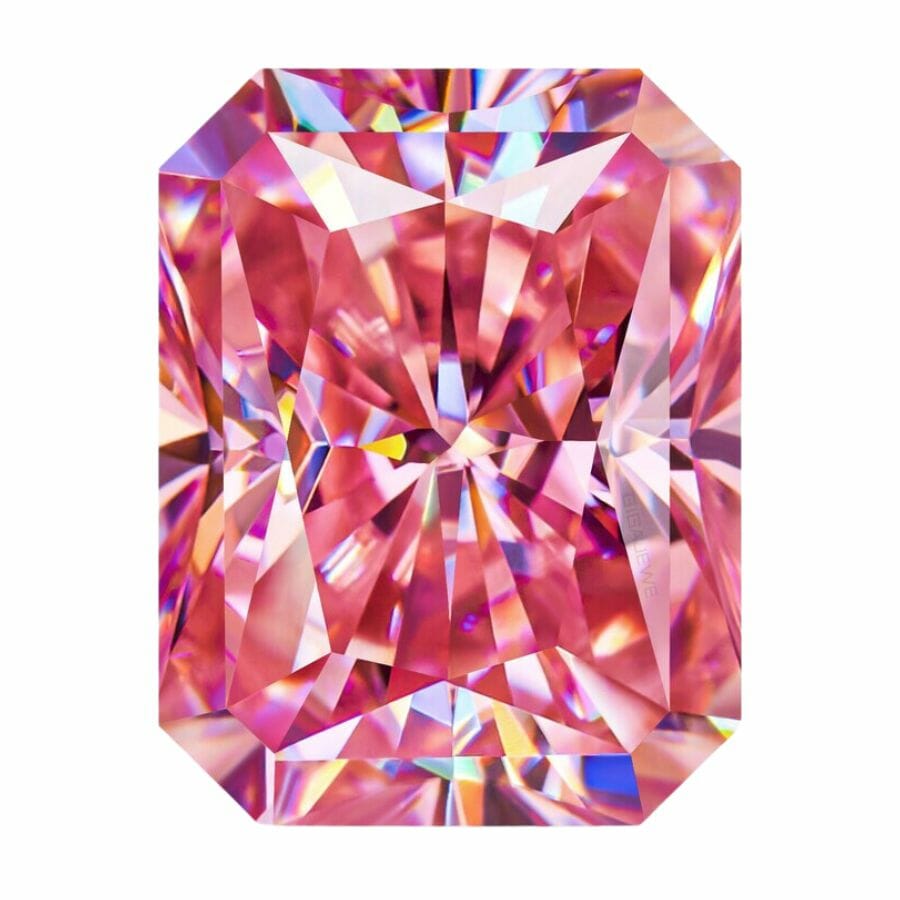
So, you’ve probably noticed that gems like morganite and moissanite can be super clear and sparkly. That’s because of their gem clarity, or how free they are from little marks or inclusions.
Let’s talk about morganite first. This gem is pretty awesome because it’s often found with excellent clarity. That means it has very few inclusions, which are tiny imperfections.
When you look at a piece of morganite, you’ll usually see a nice, clean gem that really sparkles.
Now, moissanite is a little different because it’s lab-grown. Scientists can control the conditions when they make moissanite, so it’s almost always virtually inclusion-free.
So, with moissanite, you’re pretty much guaranteed a gem with exceptional clarity.
Magnetism – Neither gem is magnetic
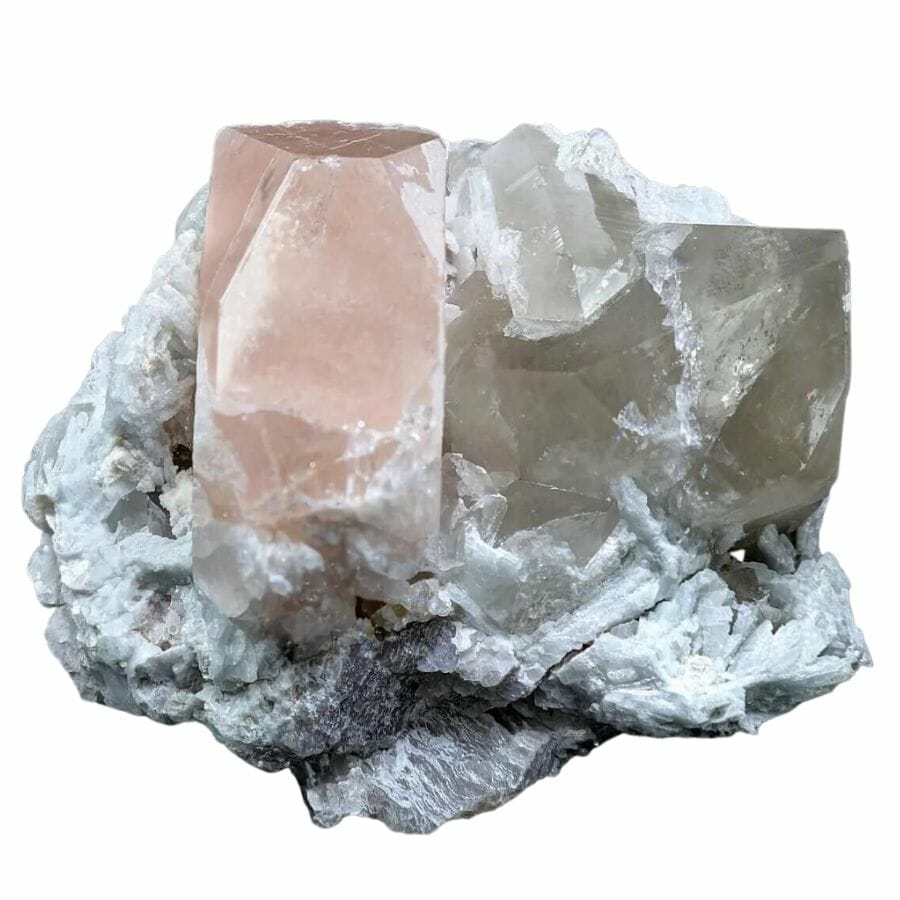
Have you ever held a magnet up to a gemstone to see if it sticks? If you tried this with a morganite or a moissanite gemstone, you would find that they don’t stick to the magnet at all. Here’s why.
Morganite is not magnetic. This means it doesn’t attract or stick to magnets. If you put a morganite next to a magnet, it would just sit there, unphased by the magnetic field.
Moissanite also shares this non-magnetic property.
The Easiest Ways to Tell Morganite and Moissanite Apart
We can use a couple of tools to distinguish morganite vs moissanite. With these simple tools, you’ll be able to get closer to positively identifying a stone you might be wondering about.
Conduct a scratch test
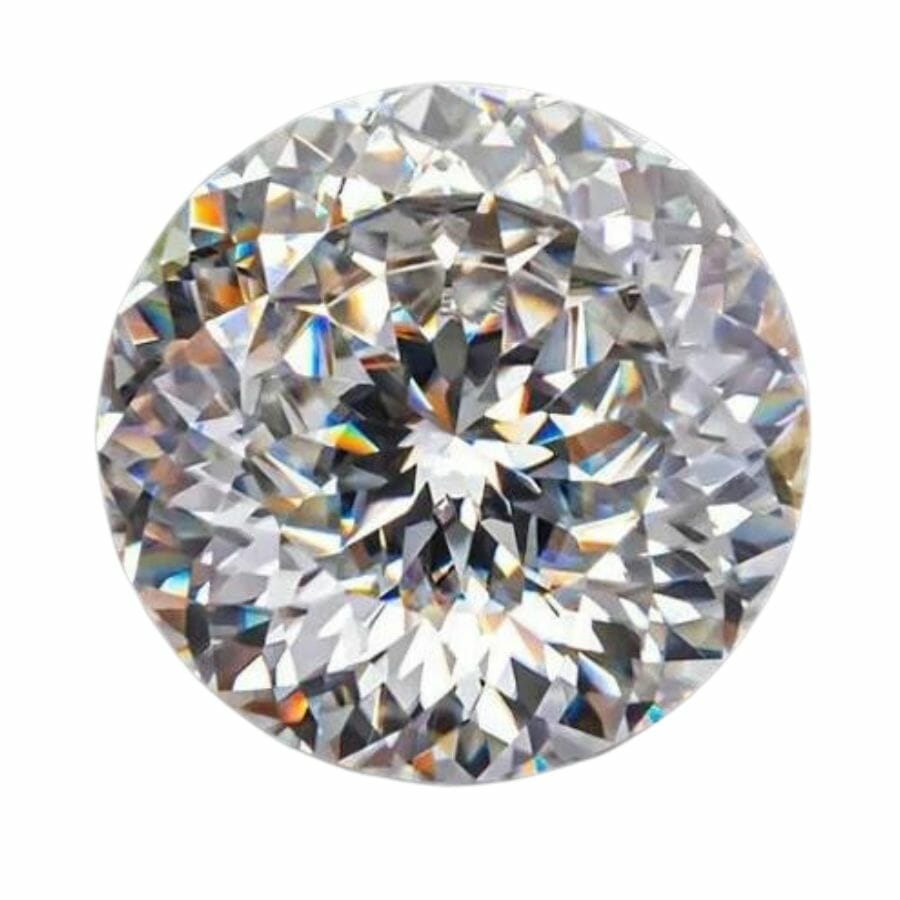
Morganite and moissanite may both be beautiful gemstones, but did you know you can tell them apart with a drill bit? But not just any drill bit; you’ll need one with a tungsten carbide tip.
Tungsten carbide is super hard. On the Mohs scale, it’s a 9. That’s just below diamond, the hardest material we know! So, it’s really tough and can scratch many materials.
Here’s where it gets interesting. Morganite is softer than tungsten carbide, which means a tungsten carbide drill bit can scratch it.
So, if you gently try to scratch a gem with this drill bit and it leaves a mark, it’s likely morganite.
On the other hand, moissanite is even harder than tungsten carbide. So, the same drill bit won’t leave a mark on moissanite. If your gem remains scratch-free, it could well be moissanite!
Just remember, always be super careful if you’re trying this method. After all, we wouldn’t want to harm any beautiful gemstones!
Use a diamond tester
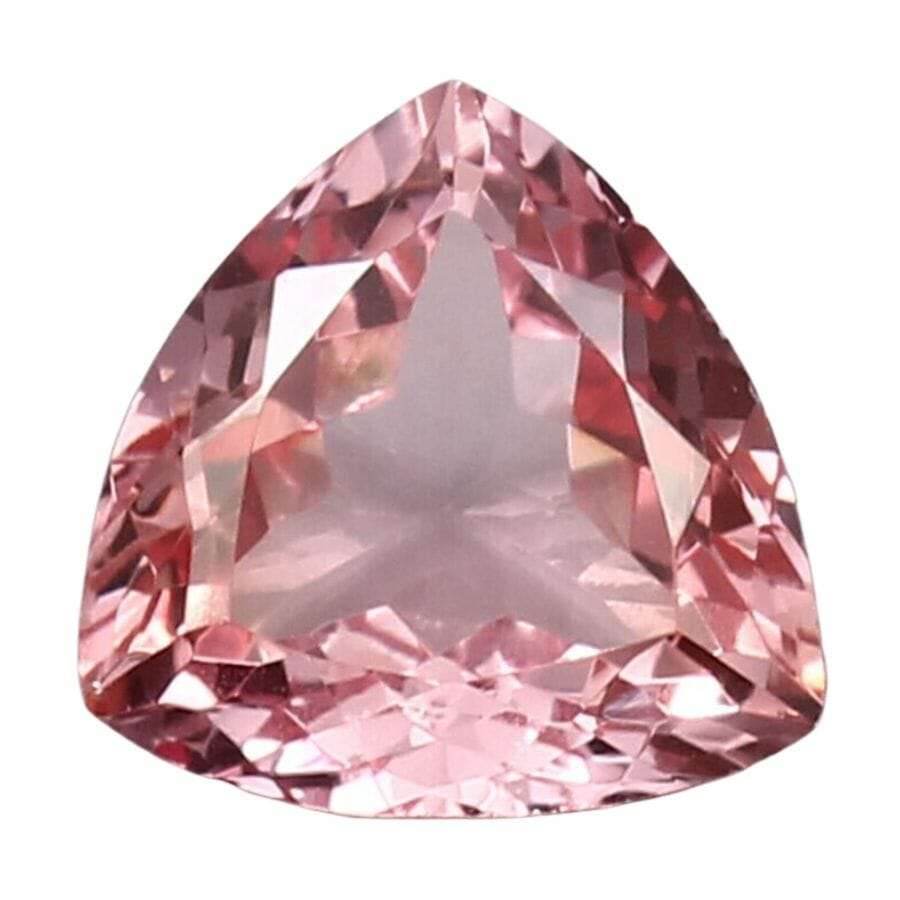
Diamond testers are handy tools to help identify various gemstones. The testers work by measuring the heat or electricity conductivity of a gemstone. They’re also cheap and widely available.
Different types of stones have unique thermal or electrical properties, and a diamond tester uses these properties to identify if a stone is a diamond or not.
Morganite and moissanite react differently when tested with a diamond tester. Morganite will not pass a diamond test, as its thermal and electrical properties are vastly different from that of a diamond.
On the other hand, moissanite can trick some diamond testers because it conducts heat and electricity similarly to a diamond.
However, advanced diamond testers are equipped with a moissanite setting. This setting is designed to differentiate between diamonds and moissanite.
So, if you’re trying to tell a morganite and a moissanite stone apart, a diamond tester could be a helpful tool. It can save a lot of guesswork when identifying these gemstones.

